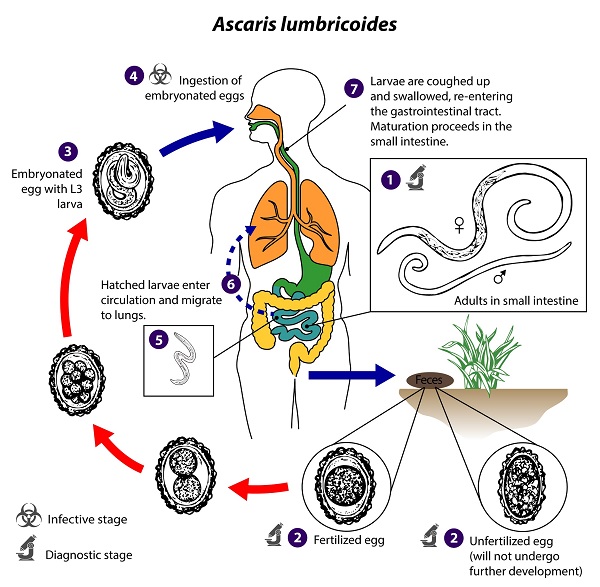Wuchereria bancrofti - Culture, Life Cycle
Culture of Wuchereria bancrofti
The culture of Wuchereria bancrofti have be achieved in cell-line cultures as well as laboratory animals. Culture is important for screening potential anti-filarial drugs and for the derivation of antigens for immunological studies.
Cell line culture
Wuchereria bancrofti is cultured in mosquito-cell lines consisting of medium 199 supplemented with 10% inactivated human serum, organic acids, and sugars of Grace’s insect medium.
The cell line is inoculated and incubated at 28°C at pH 7.4. After 8 days, ensheathed Wuchereria bancrofti is developed with nearly 30% of the parasites developing into third-stage larvae (L3).
Animal inoculation
Wuchereria bancrofti are cultured in laboratory animals such as African green leaf monkeys (Presbytis melalophos and Presbytis cristata) via subcutaneous inoculation of third-stage larvae (L3).
After a pre-patent period of 6 weeks, microfilaria is found in the blood while adult worms are recovered from the inguinal, sacral, paraaortic lymph nodes, thoracic duct, and associated vessels.
Life Cycle of Wuchereria bancrofti
The life cycle of Wuchereria bancrofti is completed in two classes of hosts – the definitive host and the intermediate host.
Definitive host: Humans
Intermediate host: Mosquitoes – Culex quinquefasciatus, Anopheles, Aedes spp.

Wuchereria bancrofti life-cycle (Source: CDC)
Transmission of Wuchereria bancrofti begins with the bite of infected mosquitoes onto a healthy person.
bite of an infected mosquito transmits the third-stage larvae (L3) onto the skin
the larvae enter through the punctured wound made by the infected vector and reach the peripheral lymphatic vessels
Wuchereria bancrofti larvae quickly migrate to inguinal lymph nodes where they metamorphose and grow into sexually mature adult males and adult female
both adult male and female filarial nematodes live in regional lymphatic vessels and nodes (mostly in the cortex of lymph nodes and testicular tissues) as coiled-up structures
after fertilization, the ovo-viviparous female deposits microfilariae
the newly emerged microfilariae appear in the peripheral blood within 8 to 12 months of infection
these microfilariae circulate in the blood from 6 months to 2 years
if these microfilariae are not taken up by the vector (mosquitoes), they die
if the microfilariae are ingested by the vector, within 2 to 6 hours inside the vector’s stomach, they lose their sheath
within 4 hours to 17 hours, these microfilariae larvae migrate to the thoracic muscles
the slender Wuchereria bancrofti microfilariae larvae undergo development in the next 48 hours to molt into first-stage larvae (L1)
these L1 larvae are thick, short, sausage-shaped with spiky tails, measuring 124 to 250 µm in length and 10 to 17 µm in breadth
Between 3rd day to 7th day, the L1 larvae of Wuchereria bancrofti molt to become larger sausage-shaped second-stage larvae (L2)
L2 larvae measure 225 to 300 µm in length and 15 to 30 µm in breadth
the L2 larvae eventually moults to third-stage larvae (L3) by the 10th and 11th day
on the 14th day of infection, L3, the infective form of the parasite, migrates to the salivary glands of the mosquito vector
if the vector takes a blood meal from a healthy person, the L3 Wuchereria bancrofti larvae are released from the tip of the proboscis of the infected mosquito into a new host
*development of Wuchereria bancrofti larvae in mosquitoes is completed in 10 to 20 days.
* microfilariae of the filarial nematode do not undergo multiplication to increase in number i.e. only each microfilaria develops into one infective larva